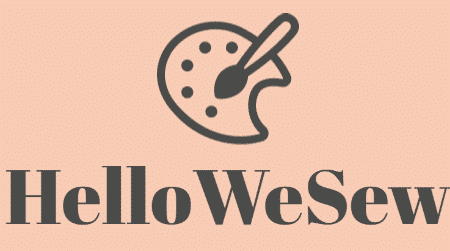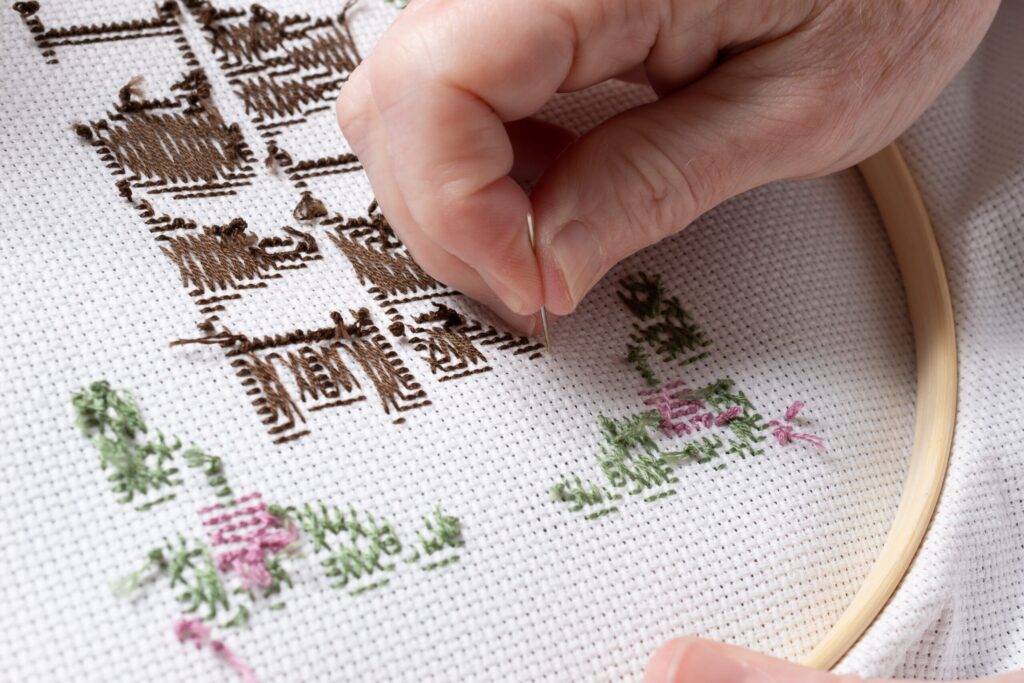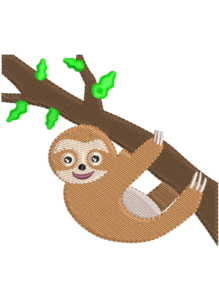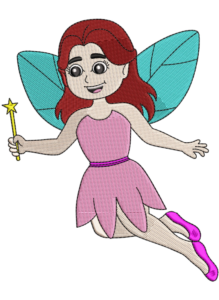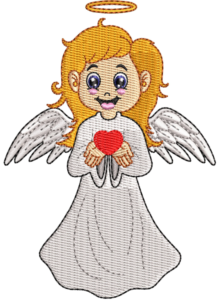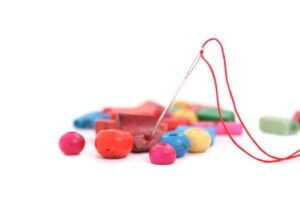Welcome to our hand embroidery tutorial for beginners! In this post, we’ll go over the basics of hand embroidery, including the supplies you’ll need and some basic stitches. By the end of this tutorial, you’ll be ready to start your own hand embroidery project!
Embroidery is a great way to add a personal touch to fabric. It’s also a relaxing and portable hobby – perfect for when you need a break from screens! Hand embroidery is a bit different from machine embroidery, but don’t worry – it’s not difficult to learn. In this tutorial, we’ll cover the basics of hand embroidery so that you can get started on your own projects.
What You’ll Need
To get started with hand embroidery, you’ll need a few supplies. First, you’ll need fabric. Any type of fabric will work for hand embroidery, but you may want to start with something lightweight like cotton.
Next, you’ll need embroidery floss. This is a type of thread that is specifically made for embroidery. It’s usually made from cotton or rayon, and it comes in a variety of colors. You can find embroidery floss at most craft stores.
Finally, you’ll need a needle. You can use a regular sewing needle for hand embroidery, but you may find that an embroidery needle is a bit easier to use. Embroidery needles have a sharp point and a large eye, which makes them easier to thread. You can find embroidery needles at most craft stores or online.
Now that you have your supplies, let’s learn some basic stitches!
Basic Stitches
There are a few basic stitches that you should learn before you start embroidering. These stitches will form the foundation for more complex stitches, so it’s important to get them right.
The first stitch you should learn is the straight stitch. The straight stitch is the most basic embroidery stitch, and it’s also the most versatile. To make a straight stitch, simply insert your needle into the fabric and pull it through. Then, insert the needle into the fabric a short distance away from the first stitch and pull it through. Continue making stitches until you reach the end of your thread.
Check out this tutorial on YouTube for Straight Stitch
The next stitch you should learn is the backstitch. The backstitch is similar to the straight stitch, but it’s slightly more durable. To make a backstitch, insert your needle into the fabric and pull it through. Then, insert the needle into the fabric a short distance behind the first stitch and pull it through. Continue making stitches until you reach the end of your thread.
Check out this tutorial on YouTube for Backstitch
The last stitch you should learn is the running stitch. The running stitch is a quick and easy stitch that is perfect for outlining shapes. To make a running stitch, simply insert your needle into the fabric and pull it through. Then, insert the needle into the fabric a short distance away from the first stitch and pull it through. Continue making stitches until you reach the end of your thread.
Check out this tutorial on YouTube for Straight Stitch
Now that you know some basic stitches, you’re ready to start embroidering!
Tips for Embroidering
There are a few things to keep in mind when you’re embroidering. First, it’s important to choose the right fabric. As we mentioned before, lightweight fabrics like cotton are a good choice for beginners. Lets continue with hand embroidery tutorial for beginners…
What to look for when choosing fabric for embroidery?
The first thing you’ll want to consider is the weight of the fabric. Embroidery thread is relatively heavy, and if the fabric is too light, the stitches will pull it down and distort the design. A good rule of thumb is to choose a fabric that is at least twice as heavy as the embroidery thread.
Another important consideration is the weave of the fabric. A tightly woven fabric is best, as it will prevent the stitches from showing through to the other side. A fabric with a loose weave will also work, but you may need to use a stabilizer to keep the stitches from showing through.
The next thing to consider is the color of the fabric. If the fabric is too light, the stitches will be very visible. If the fabric is too dark, the stitches may be difficult to see. Choose a fabric that is a medium color, such as a light blue or a pale pink.
Finally, you’ll want to consider the texture of the fabric. A smooth fabric is best for embroidery, as it will allow the stitches to lay flat. A fabric with a lot of texture, such as a linen, will also work, but the stitches may not lay as flat.
Now that you know what to look for when choosing fabric for embroidery, let’s take a look at some specific fabrics that are well suited for embroidery.
One of the best fabrics for embroidery is cotton. Cotton is a durable fabric that can withstand a lot of wear and tear. It’s also a fairly inexpensive fabric, which makes it a great choice for those on a budget.
Another great choice for embroidery is linen. Linen is a bit more expensive than cotton, but it’s well worth the investment. Linen is a very strong fabric, and it has a beautiful texture that will make your embroidery stand out.
Finally, silk is another excellent choice for embroidery. Silk is a bit more expensive than cotton and linen, but it has a beautiful sheen that will make your embroidery really pop.
Now let’s continue with our hand embroidery tutorial for beginners.
It’s also important to choose the right thread. As we mentioned before, embroidery floss is a good choice for most projects. However, if you’re working with a thicker fabric, you may want to use a thicker thread.
What to look for when choosing the right thread for embroidery?
When it comes to embroidery, the type of thread you use can make a big difference in the overall look of your project. With so many different types of thread available on the market, it can be tricky to know which one is right for your project. Here are a few things to keep in mind when choosing the right thread for embroidery:
The first thing you need to consider is the type of fabric you will be embroidering on. Different fabrics require different types of thread in order to create a successful embroidery design. For example, if you are embroidering on a delicate fabric such as silk, you will need to use a special silk thread that is designed for embroidery. On the other hand, if you are embroidering on a heavier fabric such as denim, you can get away with using a regular cotton thread.
Another thing to consider is the type of design you are embroidering. Certain embroidery designs require specific types of thread in order to look their best. For instance, if you are embroidering a design with a lot of small details, you will need to use a thinner thread so that the details don’t get lost in the stitching. On the other hand, if you are embroidering a design with large areas of solid color, you can use a thicker thread without worry of the design getting lost in the stitching.
Finally, you need to consider the overall look you are going for with your embroidery project. Different types of thread can give your project a different look and feel. For instance, if you want your embroidery to have a vintage look, you might want to use a thread that is made from natural fibers such as cotton or linen. On the other hand, if you want your embroidery to have a more modern look, you can use synthetic threads such as polyester or rayon.
No matter what type of embroidery project you are working on, there is a thread out there that is perfect for it. By keeping these things in mind, you can be sure to choose the right thread for your project and create a beautiful piece of embroidery.
Conclusion
Finally, it’s important to have patience! Embroidery is a slow and relaxing process, so it’s important to take your time. If you make a mistake, don’t worry – you can always start over.
We hope you enjoyed this hand embroidery tutorial for beginners! If you’re looking for more embroidery resources, be sure to check out our other blog posts.
Hey, check out 20 Embroidery Stitches You Should Know!
